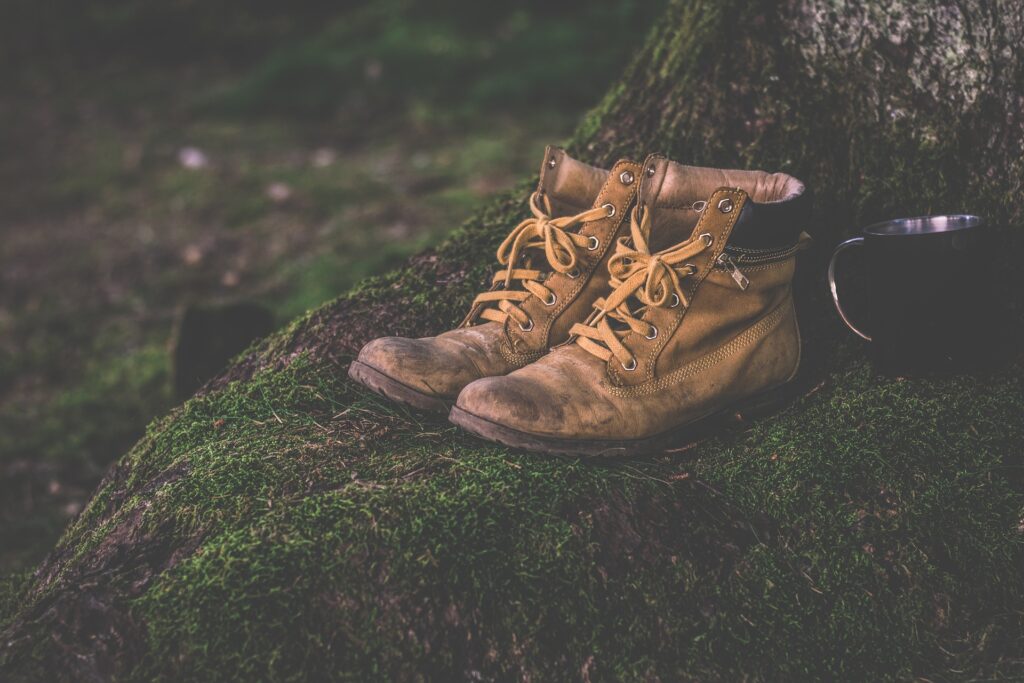When preparing for a hike, one of the most critical decisions you’ll make is what to wear on your feet.
The debate between hiking boots and shoes is longstanding, with each offering distinct advantages depending on the trail, the load, and personal preference.
This guide will help you navigate the choice between boots and shoes for your next outdoor adventure.
The Fundamental Difference
At first glance, the difference between a hiking boot and a hiking shoe seems straightforward—one extends above the ankle, offering more support, while the other sits below, allowing for greater flexibility.
However, the choice between the two encompasses more than just ankle support; it involves considering the terrain, the weather, and what you’ll be carrying.
When to Wear Boots or Shoes
Deciding whether boots or shoes are better for long hikes depends on several factors.
For light day hikes or when carrying a minimal pack, hiking shoes or trail runners might be the perfect fit, offering comfort and agility.
However, for treks like the Continental Divide Trail, where you’re shouldering a heavier load, the additional support and protection of hiking boots are invaluable.
Break-in Period: A Necessary Step
Both hiking boots and hiking shoes require a break-in period, a testament to their durable construction. Made from robust materials like leather or nubuck, these footwear options are designed to withstand the rigors of the trail, becoming more comfortable and personalised to your foot over time.
Waterproofness: Keeping Feet Dry
The material of your hiking footwear plays a crucial role in its waterproof capabilities.
Both boots and shoes can offer excellent water resistance, ensuring your feet stay dry through puddles and rain, as long as the water doesn’t rise above the footwear’s cuff.
Rocky Terrain: Choosing the Right Support
For navigating rocky terrain, both hiking boots and shoes are equipped with features like rock plates to protect against sharp objects.
The choice here often boils down to personal preference—whether you prioritise the ankle support of boots or the flexibility of shoes for scrambling and climbing.
Backpacking Trips: Versatility on the Trail
The versatility of hiking footwear means that even on backpacking trips, the choice between boots and shoes is yours to make.
Consider your comfort, the terrain, and whether extra ankle support or flexibility will serve you better on the trail.
Durability: Built to Last
The durability of your hiking footwear is determined more by its quality and construction than by whether it’s a boot or a shoe.
Both are designed to endure the demands of the trail, though the longevity of each will vary based on brand and materials.
Breathability: Keeping Cool
Hiking shoes generally offer more breathability than boots due to their lower cuff, making them a cooler option for warm-weather hikes.
However, for those prioritising breathability, trail running shoes might be an even lighter, more ventilated choice.
Trail Running: A Specialised Option
While hiking boots and shoes cater to a range of motion suitable for walking and light scrambling, trail running shoes are specifically designed for the runner’s stride, combining flexibility, support, and protection.
Winter Hiking: The Case for Boots
In winter conditions, hiking boots are the clear winner, providing the insulation and protection needed to keep feet warm and dry in snow and cold temperatures.
Their higher cuff and robust construction make them ideal for tackling snowy trails.
The Verdict: Boots vs Shoes
Ultimately, whether you choose hiking boots, shoes, or even trail runners, the best footwear is the one that meets your specific needs on the trail.
Consider the terrain, the weather, and your physical preferences to make a choice that will enhance your hiking experience, keeping you comfortable, protected, and ready to explore the great outdoors.

